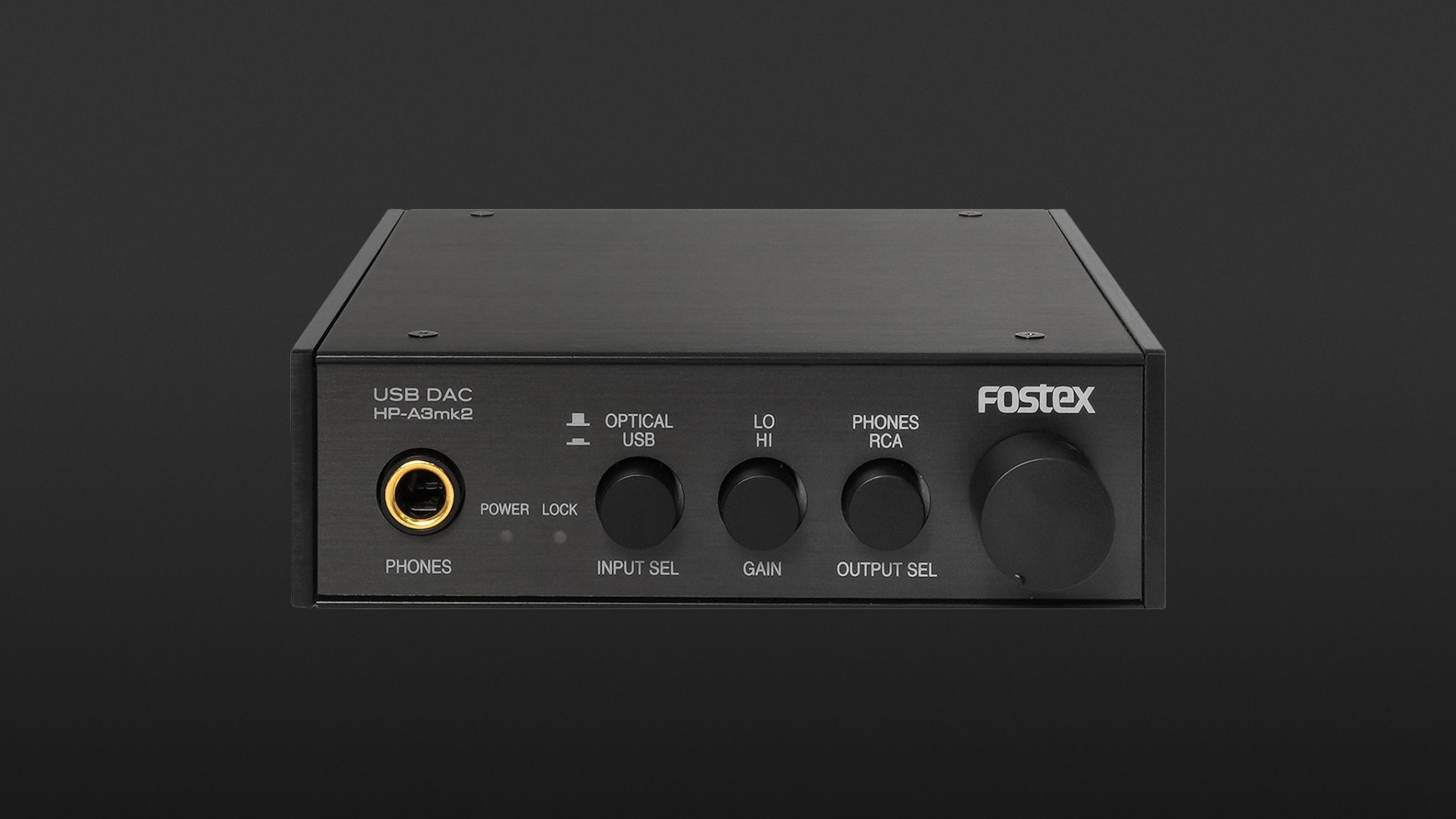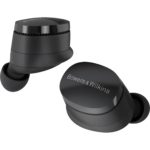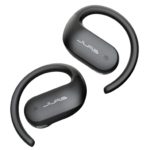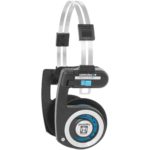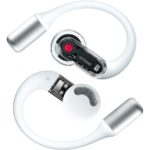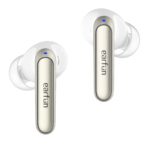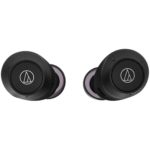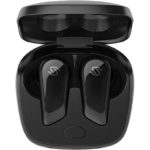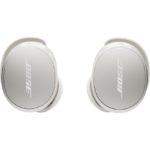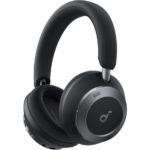With the HP-A3mk2, the long-established Japanese manufacturer Fostex presents a handy, high-quality D/A converter and headphone amplifier that is suitable for mobile use and can be operated out of the box with both Windows and macOS. The DAC chip used is the ES9016K2M from ESS Technology, which can process audio data with up to 24Bit/192kHz.
- Portable desktop format
- Up to 24 bit/192 kHz
- Low-noise amplification
- Two switchable digital inputs
- Two switchable analog outputs
- Can be used as D/D converter (USB to optical)
- No on/off switch
- Quite low power reserves
- Hi-Gain operation in the bass range not quite level-proof
With compact dimensions of 114 millimetres in width, 135 millimetres in length and 34 millimetres in height, which increases to 37 millimetres when you include the foam feet, the HP-A3mk2 will fit easily into a large laptop bag.
This robust-looking device weighs 499 grams and can be supplied with the required power via the USB-C port (USB 2.0 Hi-Speed), for which a 100-centimetre USB-C to USB-A cable is included. Alternatively, independent operation from a laptop or computer is possible via a USB power adapter.
Features of the Fostex HP-A3mk2
At the rear, this D/A converter and headphone amplifier provides an optical digital input in addition to the USB-C port, allowing you to use, for example, a CD player as the feed player. The HP-A3mk2’s optical digital output, on the other hand, enables D/D conversion from the USB input. In addition, analogue RCA outputs are available for connecting active monitor speakers or an amplifier, while the headphone jack in 6.3mm format is on the front. Selection of the active input and output (USB/optical and RCA/headphone) can be done via buttons on the front panel.
A third button can be used to switch between Lo and Hi gain (+10 dB). In addition to a rotary control for adjusting the monitoring volume, two LEDs indicate whether the unit is ready for operation and whether the input source has been detected. However, the unit does not have a power button for switching on and off.
In practice: listening with sensitive or demanding headphones
If you want to drive sensitive IEMs with the Fostex HP-A3mk2, it is possible to do this without noise. The volume control range shortens from 7:30 to 11 o’clock with a Sennheiser E 100 Pro in lo-gain mode, as the output level is otherwise too high. However, a slight background noise only becomes noticeable in the hi-gain position from 3 o’clock and is thus clearly outside the listening range.
High-impedance headphones such as a HD 660S from Sennheiser could also benefit from the low-noise amplification of this mobile solution. Here, the HP-A3mk2 provided sufficient reserves with up to 100 milliwatts at 32 ohms and 20 milliwatts at 300 ohms. The situation was more difficult when using the Beyerdynamic DT 1990 Pro, which could still reproduce time-honoured classical recordings at room volume in lo-gain mode.
However, with power-hungry magnetostats like the Hifiman Sundara, the hi-gain setting was necessary to bring Tchaikovsky’s 1812 Overture conducted by Erich Kunzel with the Cincinnati Symphony Orchestra to an appropriate volume level. However, the additional gain of +10 dB in the lower frequency range proved not to be level-proof, as the notorious cannon blasts on the Telarc version from 1979 became distorted. It made no difference whether the feed was via USB (Qobuz) or the optical digital input (Yamaha CD-S303).
Sound
In terms of spatial imaging, the Fostex HP-A3mk2 was superior to miniature mobile headphone amplifiers such as an Apogee Groove, and this was illustrated by live recordings such as Gregory Porter’s performance of “It’s Probably Me” (Polar Music Prize, Stockholm 2017). With the DT 1990 Pro, a more generously sized stage was available, placed deeper in the room and conveying a more realistic concert atmosphere than with the distinctly more direct and compact presentation of the Groove. Tracks such as “Mad Rush” from this year’s “Multi Faith Prayer Room” studio album by the Wiesbaden trio Brandt Bauer Frick were also reproduced by the HP-A3mk2 in a more spacious way. The listening room “grew” in width, but it felt like it mainly grew in length because the depth was staggered in a targeted way.
Neither of these devices had a slim bass range; instead, it was substantial, and the low bass of the Groove seemed somewhat more controlled and precise. In contrast, the HP-A3mk2 seemed more contoured in the mid and upper registers and had a slightly brighter sound. While the combination of Groove and HD 660S reproduced Taylor Swift’s “Invisible String” with a little more basic warmth and made the vocals sound more full-bodied and intimate, the HP-A3mk2’s voice reproduction seemed a little lighter and, above all, purer. The Groove also gave Billie Eilish’s “All The Good Girls Go To Hell” a more down-to-earth sound impression with a more centred vocal reproduction. With the HP-A3mk2, on the other hand, the midrange was illuminated more, opening up spaces for the very clean and fresh-sounding vocals.
Conclusion
If you don’t need high power reserves, the Fostex HP-A3mk2 is a portable, low-noise D/A converter and headphone amplifier that, from a sound perspective, has a lot to offer. In particular, the pure midrange reproduction and the spatial imaging should meet higher expectations and were reminiscent of stationary devices. This also applies to the mobile solution’s features, which enable the connection of active monitor speakers via the line output.
Technical specifications
- Ear couplingAmplifier
- TypeDesktop
- Cable length100 cm
What's in the box
- USB-C to USB-A cable





